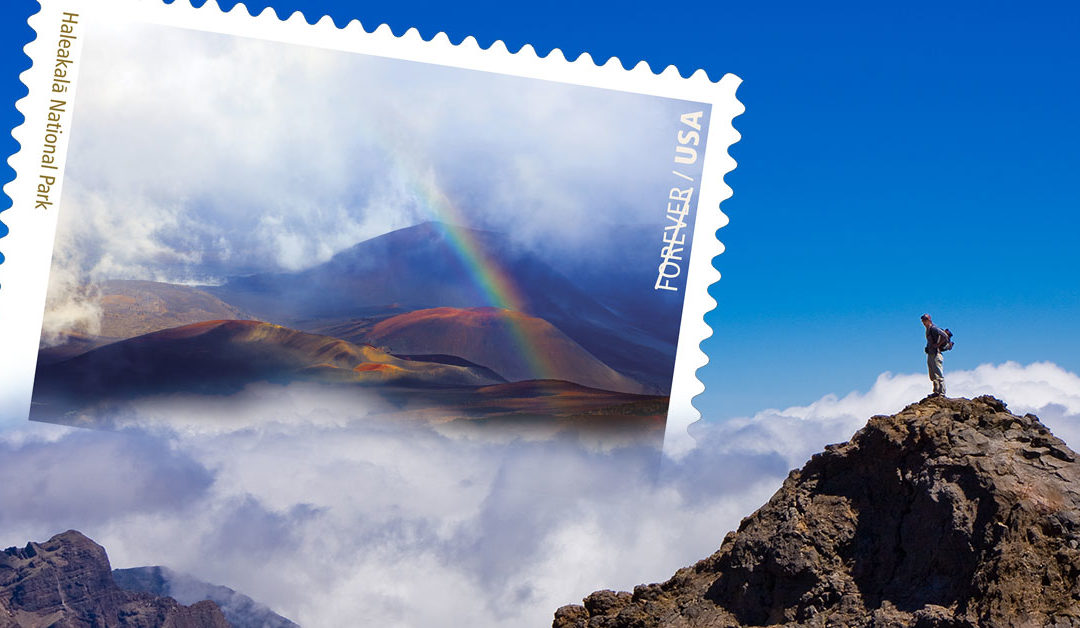Yellowstone. Mount Rainier. The Grand Canyon; the Everglades.
These four iconic and astoundingly beautiful places debuted this year on U.S. Forever stamps—and a few years ago our own Haleakala National Park has been added to the list.
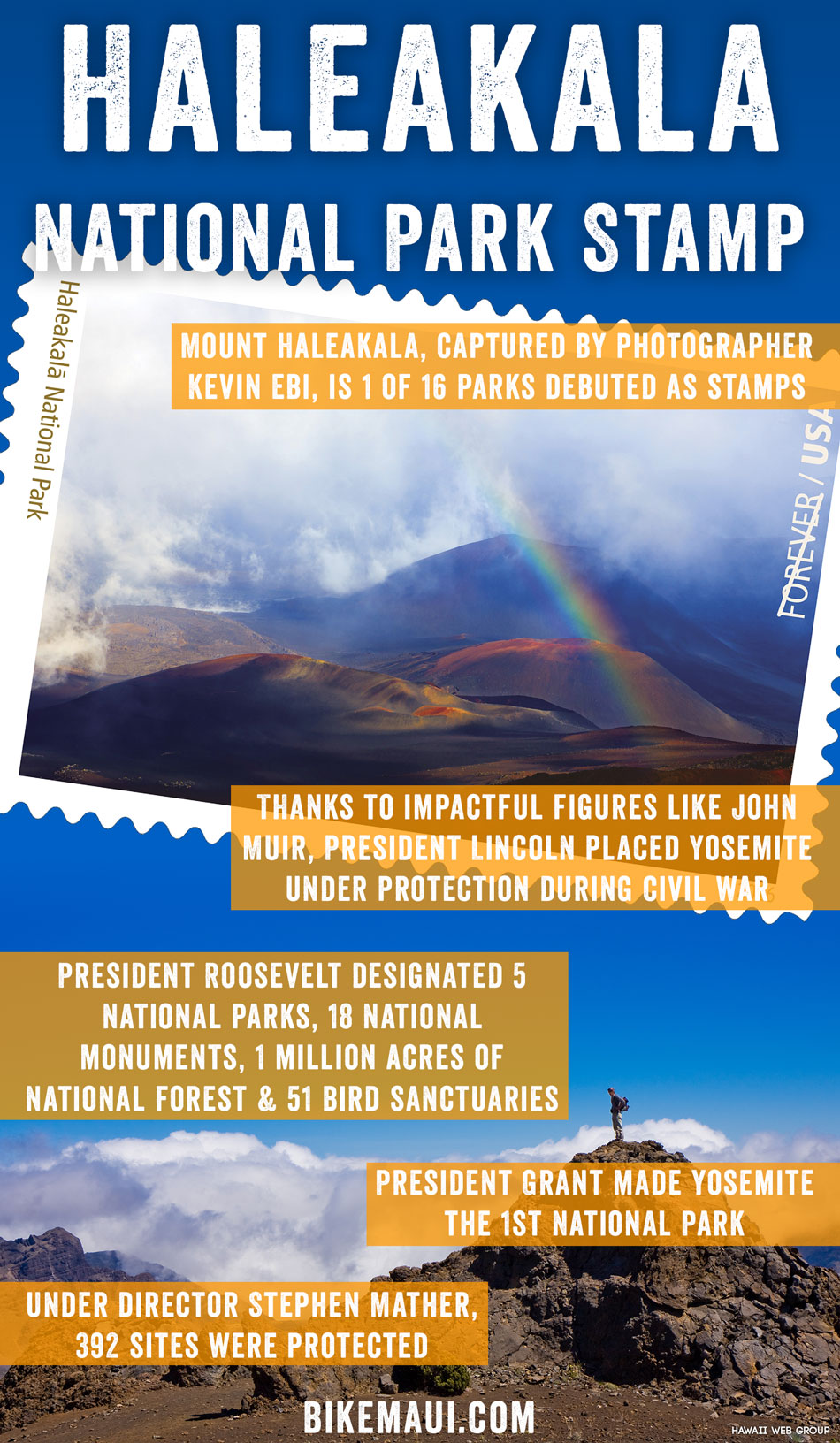 The unveiling of the U.S. Postal Service’s National Park stamps coincided with the National Park’s Centennial, which kicked off the next hundred years of honoring, conserving, and celebrating our country’s gorgeous parks.
The unveiling of the U.S. Postal Service’s National Park stamps coincided with the National Park’s Centennial, which kicked off the next hundred years of honoring, conserving, and celebrating our country’s gorgeous parks.
Created in part by President Theodore Roosevelt, what we know today as our National Parks—often divine and immense, and often at the crux of many of our fondest memories—is the result of one group’s vision and diligence.
Unofficially born in the mid-1800s when this group (helmed in part by the writer Wallace Stegner) came together to make a commitment to preserving the U.S.’s most beloved treasures, the journey towards developing an organization that would shield these places from modern civilization—and protect the wildlife within them—began with Yosemite in California’s Sierra Nevada Mountains.
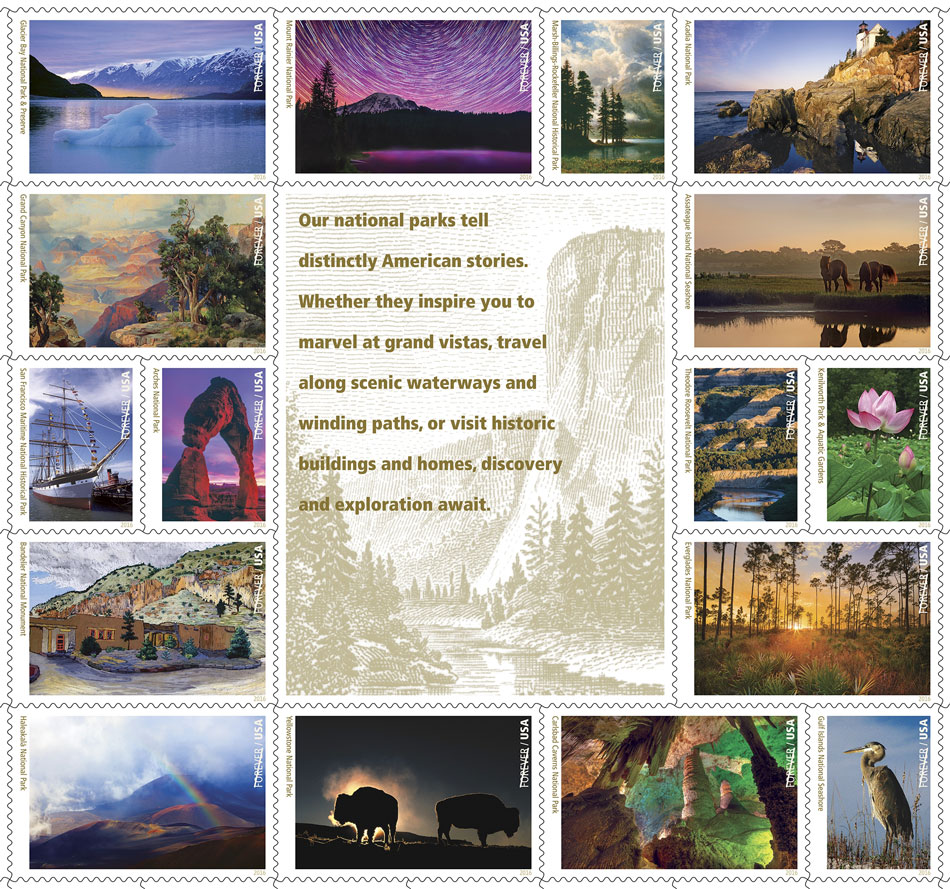 Impactful figures, like the great John Muir, gave voice to the need to keep the hallowed site sacrosanct; in response, President Abraham Lincoln placed Yosemite under the protection of California during the Civil War. President Ulysses S. Grant—who served as Lincoln’s general—then appointed the home of El Capitan and Half Dome the country (and the world’s) first National Park. President Roosevelt followed suit, designating five national parks during his tenure, as well as eighteen national monuments, over a million acres of national forest, and 51 bird sanctuaries. “It was,” Stegner wrote, “the best idea we ever had.”
Impactful figures, like the great John Muir, gave voice to the need to keep the hallowed site sacrosanct; in response, President Abraham Lincoln placed Yosemite under the protection of California during the Civil War. President Ulysses S. Grant—who served as Lincoln’s general—then appointed the home of El Capitan and Half Dome the country (and the world’s) first National Park. President Roosevelt followed suit, designating five national parks during his tenure, as well as eighteen national monuments, over a million acres of national forest, and 51 bird sanctuaries. “It was,” Stegner wrote, “the best idea we ever had.”
But a large part of the lasting success of our National Parks is due to a relatively unknown man named Stephen Mather.
The San Francisco-born industrialist and conservationist fought tirelessly against private commercial interest, hoteliers, ranchers, and more to create the preservation model for which our National Parks are known today. His goal—to “protect the parks unimpaired for the enjoyment of future generations”—was realized in 1916. Under his directorship, the national park system grew to include 392 national parks, shores, battlefields, monuments, and other sites of splendor; he also launched a systemic criteria for the federal system to ensure the parks’ protection. As the National Parks’ Chief of Public Affairs David Barna says today, “It stands as a collective memory of where we have been, what sacrifices we have made to get here, and who we mean to be. By investing the preservation, interpretation, and restoration of these symbolic places, we offer hope and optimism to each generation of Americans.”
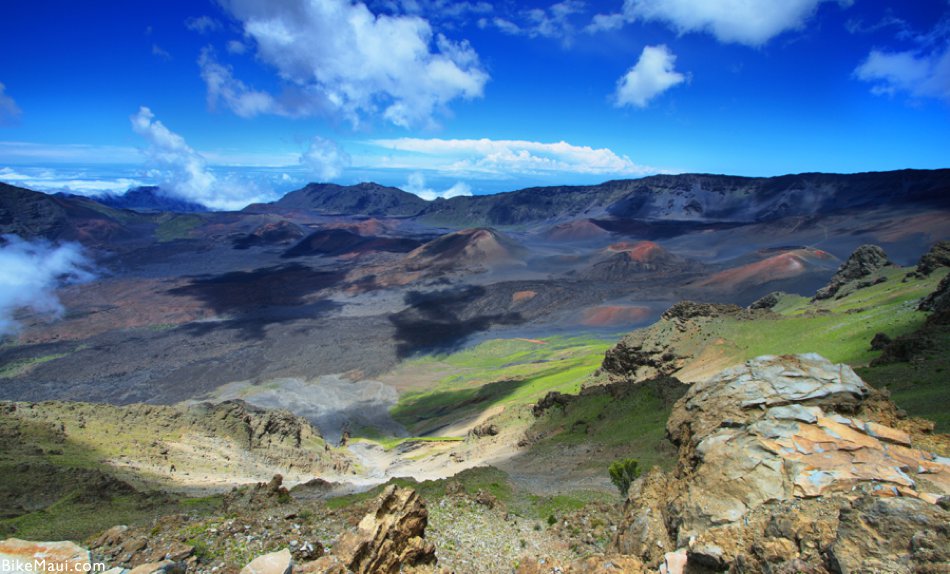 That initiative was celebrated earlier this year by the U.S. Postal Service with a tribute that began on April 4th and included an opening, first-day-of-issue ceremony at the World Stamp Show on June 2nd, a once-in-a-decade event that lured everyone from collectors to designers to the world-renowned Javits Center in New York City. Other parks featured in the collection include Maine’s Acadia National Park, Alaska’s Glacier Bay National Park and Reserve, Washington D.C.’s Kenilworth Park and Aquatic Gardens, and Carlsbad Caverns National Park in the Chihuahuan Desert of southern New Mexico.
That initiative was celebrated earlier this year by the U.S. Postal Service with a tribute that began on April 4th and included an opening, first-day-of-issue ceremony at the World Stamp Show on June 2nd, a once-in-a-decade event that lured everyone from collectors to designers to the world-renowned Javits Center in New York City. Other parks featured in the collection include Maine’s Acadia National Park, Alaska’s Glacier Bay National Park and Reserve, Washington D.C.’s Kenilworth Park and Aquatic Gardens, and Carlsbad Caverns National Park in the Chihuahuan Desert of southern New Mexico.
Each image culled for the collection of sixteen stamps commemorates the exquisiteness for which the national parks are known.
Dramatic colors and otherworldly textures dominate the stamp of Utah’s Arches National Park, while two bison shaking with winter wet take center stage on the stamp for Yellowstone. And San Francisco’s cherished Maritime National Historical Park exhibits a close-up view of a square-rigger Balcutha and steam tugboat anchored in the water.
The image selected to honor Mount Haleakala is equally breathtaking. Captured by nature photographer Kevin Ebi—who hails from Seattle, Washington—the photograph depicts a band of rainbows glowing, ghostlike and unreal, through a heavy rain storm over the crater.
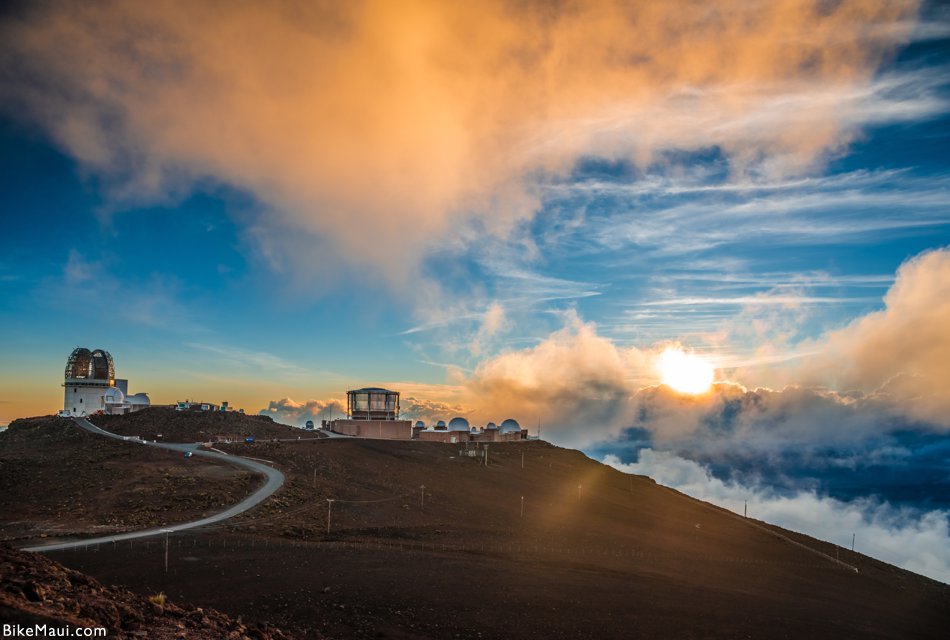 “When you think of Hawaii, you probably imagine continuous summer, warm water and hot beaches,” Ebi says of the story behind the image. “But a couple hours after landing on Maui, I was in the freezing cold, pelted by hail, surrounded by thunderclouds. For a few minutes at a time, the sun would briefly break through it, using rainbows as spotlights to illuminate Haleakala’s volcanic cinder cones. As a nature photographer, I was in heaven—or at least 10,000 feet closer to it.”
“When you think of Hawaii, you probably imagine continuous summer, warm water and hot beaches,” Ebi says of the story behind the image. “But a couple hours after landing on Maui, I was in the freezing cold, pelted by hail, surrounded by thunderclouds. For a few minutes at a time, the sun would briefly break through it, using rainbows as spotlights to illuminate Haleakala’s volcanic cinder cones. As a nature photographer, I was in heaven—or at least 10,000 feet closer to it.”
Indeed, at 10,023 feet above sea level, Haleakala is one of the most majestic sites in the Aloha State—and the only National Park out of Hawaii to be chosen for inclusion in the line of stamps.
The enormous shield volcano—the largest dormant volcano in the world, in fact—was crowned an official national treasure in 1916, a mere eighteen years after the Republic of Hawaii was annexed as a territory of the United States and forty-three years before Hawaii became the 50th state. Eight years prior to it becoming state, the lush and alluring Kipahulu Valley was authorized as an addition to the park; today, Haleakala National Park comprises over 30,000 acres and spans subclimates that range from rainforest to alpine desert. It also houses several endangered species, including the ultra-exotic Haleakala Silversword and Hawaii’s state bird, the nene goose.
While being selected for a Forever stamp speaks to the spell that Haleakala casts on many—and the deep reverence people, particularly Hawaiians, have for the “House of the Sun”—it also reflects Hawaii’s appreciation for the institution of National Parks.
Since being included on the register, many admirable efforts have been put into place to safeguard the sacred volcano from harm and to provide education and recreation for visitors, including fences to keep out invasive species, the construction and maintenance of the visitor’s center at the summit, the creation of the observatory at Red Hill, and the reintroduction of the nene goose after the rare bird faced extinction.
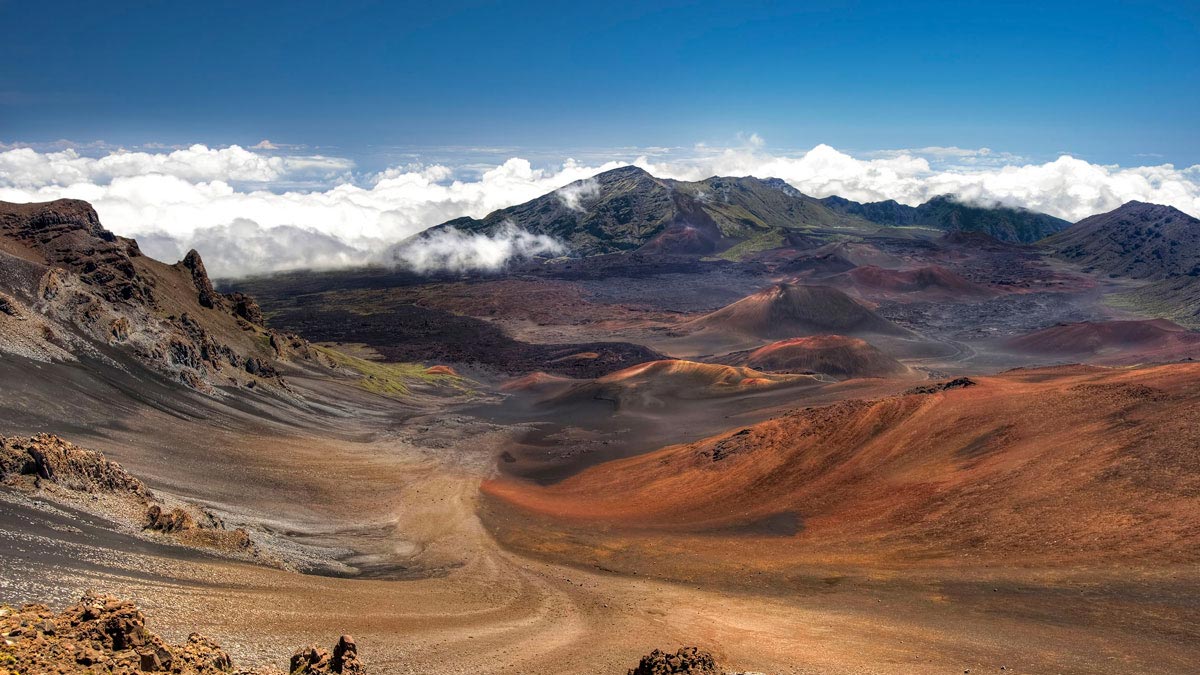
“National parks take us into a different world,” Ebi says, “a world of jaw-dropping scenery and experiences that are dramatically different from our daily lives. This image of Haleakala is both to me. And it’s why I’m so honored that it will help commemorate the 100th anniversary of the National Park Service.” Hear, hear to that—and hana hou.

